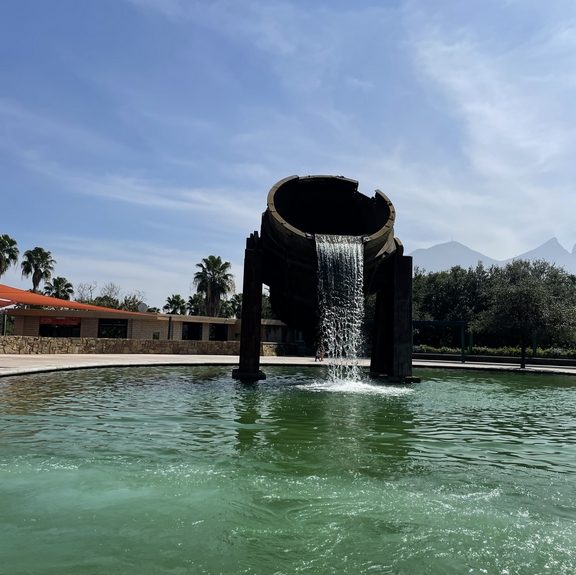The Beauty of Paseo Santa Lucia


Mexico’s equivalent of the San Antonio Riverwalk is known as Paseo Santa Lucia in the city of Monterrey, a place replete with fountains, public art, businesses, apartments and beautiful spaces that attract thousands. Watershaper JC Escudero reports it’s a place well worth visiting, and appreciating from both an aesthetic and technical perspective.
By JC Escudero
It’s a beautiful public space, defined by art, architecture, culture and above all, water. Paseo Santa Lucía is considered the longest artificial river in Latin American (2.5 kilometers) and one of the defining features in the city of Monterrey, Mexico.
The space was inspired by the River Walk in the city of San Antonio, Tex., and from the beginning was designed to become a recreation, cultural and social center for the city.
The sprawling space winds through the heart of the town, linking key locations, along the way presenting a spectrum of public-design elements from sculptures, fountains, to restaurants, shops, as well as condominiums and apartments. There are both daily walking and boat tours.
Construction began in 1996, but the work was soon halted for nearly a decade. The project ultimately involved a host of public agencies and private companies, all coming together to create a landmark for the city. It was very much a community effort that would eventually prove an extremely wise and forward-thinking investment. In fact, it’s fair to say by embracing the past, the city essentially paved the way for the future.
The walk was inaugurated in 2007, by the then President of the Mexico, Felipe Calderón Hinojosa. Today, the site attracts an estimated 4 million visitors annually. In 2013, it was listed as one of the 13 manmade wonders of Mexico.
I recently discovered the walk while visiting Monterrey for a family wedding. As someone professional devoted to building aquatic environments, I was immediately interested and inspired by this remarkable urban feature that ingeniously links the region’s past with its future.
HISTORIC COURSE
The Paseo Santa Lucía is, indeed, inspired by history. Its foot print recalls the old spring of Santa Lucía, for which it is named. The water source was key to the city’s development and existence. (It still exists, although today it is hidden underground.) The area is historically significant because it where the third and definitive foundation of Monterrey by Don Diego de Montemayor was established on September 20, 1596.
Monterrey is the capital of Nuevo Leon estado (state) in northeaster Mexico. With a population of more than 1.1 million, it is at the heart of a metropolitan area of more than 4 million. The walk is located adjacent to the historic Parque Fundidora, which is considerd the city’s economic anchor of the 21st Century.
Along the walk there are 17 information boards, where visitors can find information about events and historical sites that have marked Monterrey’s rich and sometimes turbulent history over the centuries.
Appropriately, the walk is also located next to the most significant museum district in the area which includes: Government Palace Museum, Museum of Mexican History Northeast, Steel Museum, Museum of Contemporary Art of Monterrey, Monterrey Old Quarter House of the Parrots Sesame, and Mexico’s Baseball Hall of Fame.
The walk festooned by public art. One of the most emblematic sculptures is the Crucible, made from a tool that was formerly used in the city’s foundry to pour molten steel. Another important work is La Lagartera, created by the Oaxacan artist Francisco Toledo. Installed in 2008 on the Esplanade Santa Lucía, the piece serves as the start of the tourist walk, which is conducted by the Universal Forum of Cultures.
Toledo, who passed away in 2019 and was widely considered one of Mexico’s most important contemporary artists, explained years ago that among his many thousands of works, the sculpture is the one that cost him the most to create, and was inspired by a piece that he had previously made in ceramic. The unusual rectangular-shaped sculpture is 35-feet wide and 10-feet high. It stands prominently in high relief, depicting several swimming lizards along with fish, frogs and turtles.
On the walk there is also an original inukshuk, which is one of the five Inuit works that the government of Canada has donated to five cities around the world. Other works, such as En la Espiral, El Echo de la Serpiente and Vaso Roto, provide fascinating points of interest along the walk, as well.
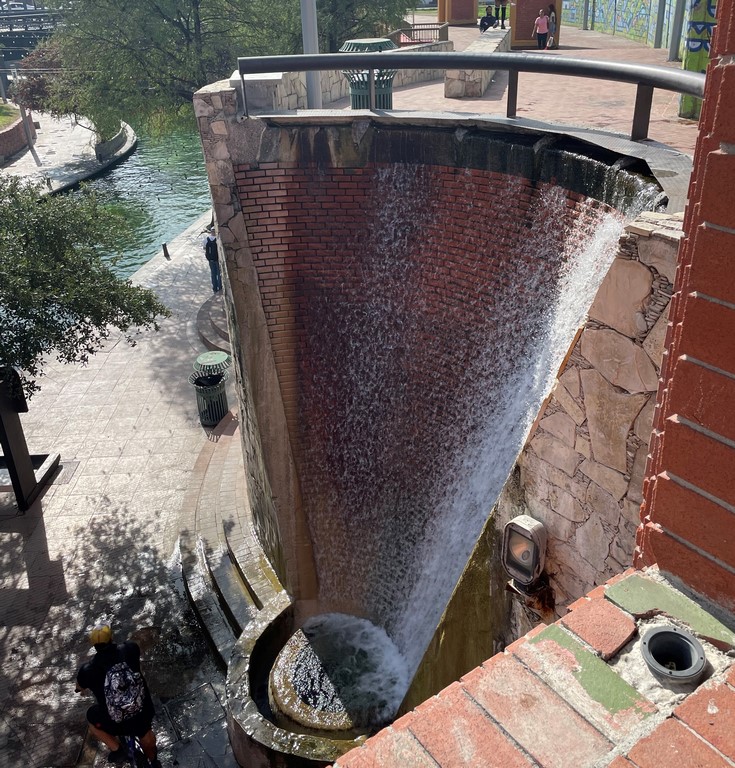
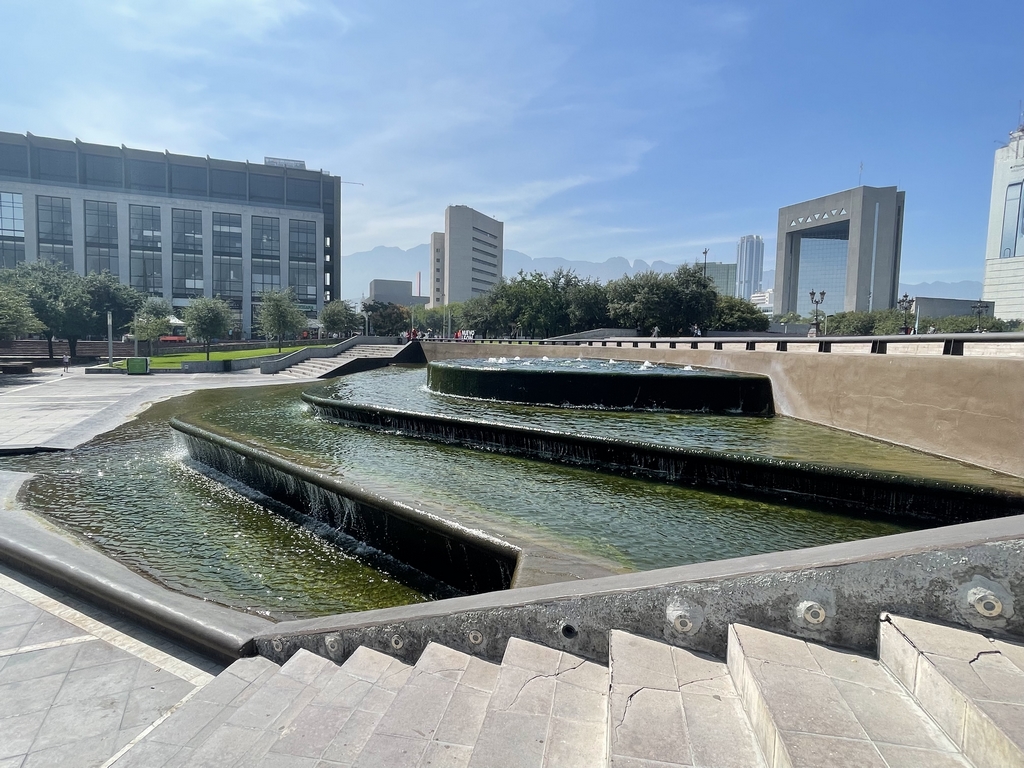
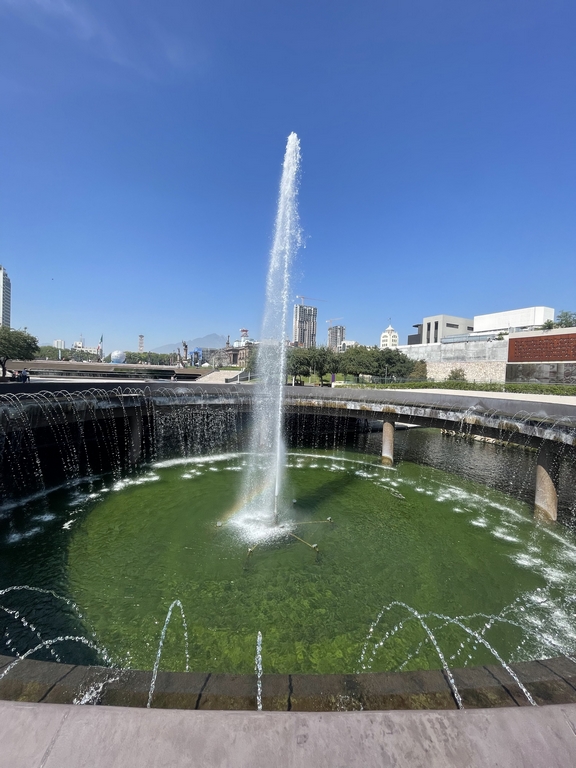
BUILDING MONUMENTS
Not surprising, much has been written and said about the site since its completion, of it entirely positive. Many of those who participated point the work with tremendous pride and sense of accomplishment.
According to landscape architect Damian Holmes of Urban Landscapes, one of the firms participating in the project: “If you take a walk through Paseo Santa Lucia you´ll find a big variety of fountains and different water features, boats that give tours along the river, bridges and of course, we tried to add as much vegetation and green spaces as possible. Taking a walk during the night is also a different experience, because the colorful lighting was all strategically planned for it to bring out the beauty of every corner.”
As a construction project, the site is impressive by any measure. The entire system contains 2,639.631 gallons of water. The canal is made of reinforced concrete, requiring 1,871.677 cubic feet of concrete, 2,172 tons of steel. Excavation produced a total of 1,975 cubic meters of spoils.
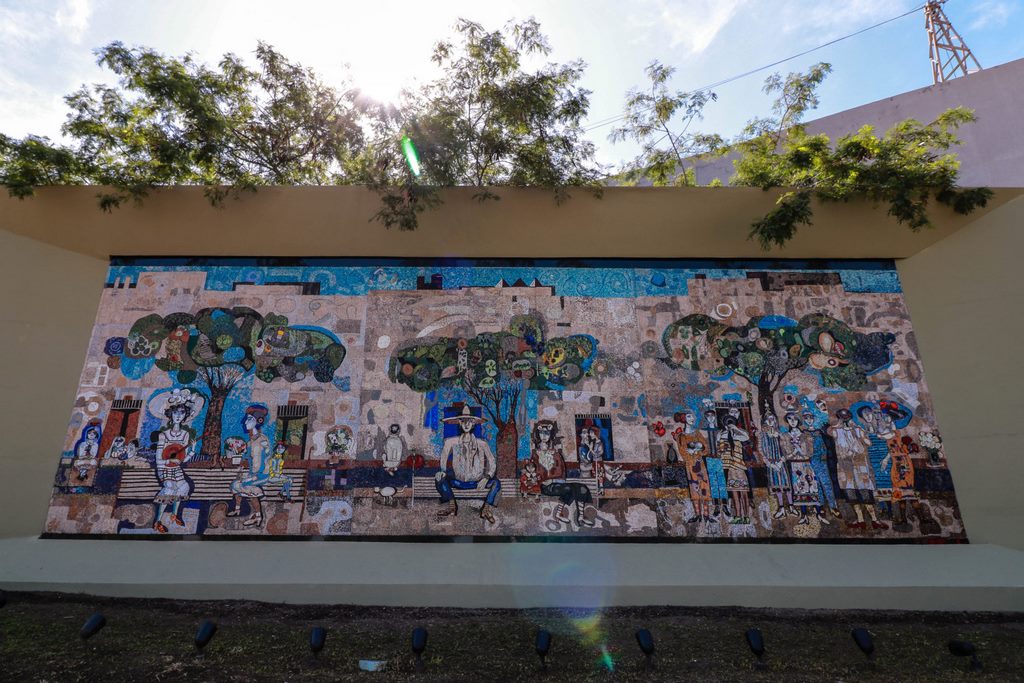
There are 25 fountains located along the route, with 50 pumps distributed throughout the circuit. It includes 14 pedestrian bridges, seven vehicular crossings, five overpasses and two depressed crossings. The walkways are finished in Terrazzo grain concrete. There footpaths on both sides of the canal averaging 10 meters wide, each with urban furniture including benches, planters and pergolas to homogenize the urban image of the master plan.
As mentioned above, the project was delayed for nine-plus years, due largely to economic reasons. When worked resumed in 2005, the installation moved forward in key phases including: the preparation of the 5-cm-thick lining surface; construction of the canal’s concrete structure with double bars of half-inch rebar, placement of the falsework for the slabs and the PVC bands that would serve as a water stop in the construction joints.
Once the preliminaries forms were ready, the pre-mixed concrete slabs with integrated waterproofing were poured, prepared in interspersed forms, ensuring proper placement as well as supervision of the positioning of the PVC bands, which serve as expansion joints.
It was a massive and complex undertaking requiring careful coordination among many different crews. Much of the labor was carefully handpicked for their skill and experience.
In the end, with the walk such a prominent part of Monterrey’s commerce and culture most local citizens and business interests would agree that it was well worth it.
Holmes adds: “We receive thousands of tourists who come to experience the richness of our culture and with the big variety of events that are held, along the river, at the plazas and open spaces that is has to offer, all year round; it makes it possible, for any person who comes, to leave with memories.”
JC Escudero, IWI, is president and founder of J Designs Pool & Spa, a custom design/build firm located in North Hollywood, Calif.










